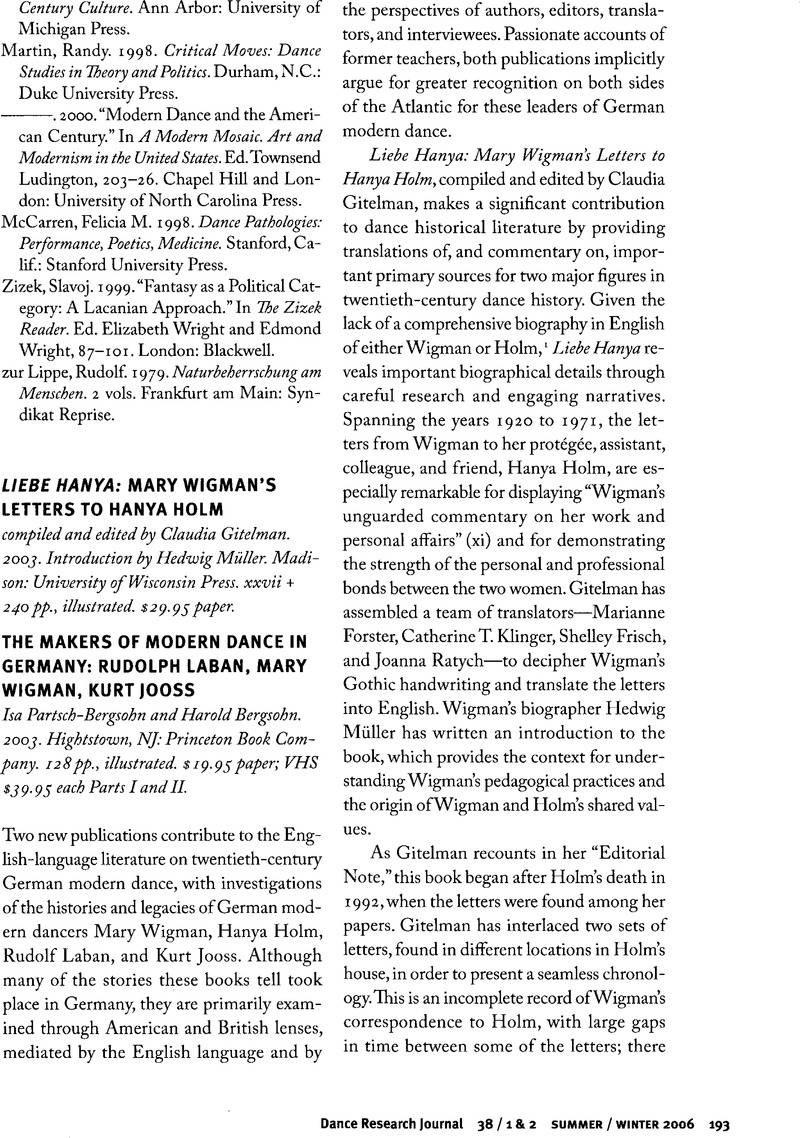Published online by Cambridge University Press: 22 July 2014

1. Hedwig Muller's biography of Wigman, Mary, Mary Wigman: Leben und Werk der grossen Tanzerin (Berlin: Quadriga, 1986)Google Scholar, has not been translated into English. Susan Manning's Ecstasy and the Demon examines selected aspects of Wigman's choreographic and pedagogical work. The only full-length biography of Holm, Hanya—Sorell, Walter, Hanya Holm: The Biography of an Artist (Middletown, Conn.: Wesleyan University Press, 1969)Google Scholar—was written while Holm was still living and is limited by sentimentality and factual inaccuracies.
2. The bibliography omits three studies of major importance: Manning, Susan, Ecstasy and the Demon: Feminism and Nationalism in the Dances of Mary Wigman (Berkeley: University of California Press, 1993)Google Scholar; Toepfer, Karl, Empire of Ecstasy: Nudity and Movement in German Body Culture, 1910–1935 (Berkeley: University of California Press, 1997Google Scholar; and Karina, Lilian and Kant, Marion, Hitler's Dancers: German Modern Dance and the Third Reich (New York: Berghahn Books, 2003).CrossRefGoogle Scholar
3. See Kant, Marion, “Laban's Secret Religion,” Discourses in Dance 1: 2 (2003)Google Scholar, published by Susan L. Foster and Ramsay Burt. In her writings, lectures, and promotional materials throughout the 1920s, Wigman often referred to dance as a religion, likening professional dance artists to priests or priestesses and amateurs to laymen (Randall, Tresa, “Hanya Holm, Community, and Dance as ‘Genuine Folk Culture,’” CORD Spring 2005 Conference Proceedings: Dance and Community, ed. Bennahum, Ninotchka and Randall, Tresa.Google Scholar